
Search
The Renewable Energy site for Do-It-Yourselfers
Pitot for Flow
Velocity/FlowRate Measurement
This page covers measuring air flow
for a solar air heating collector using a pitot tube.
More on pitot tube
flow measurements on the downspout collector test...
Back to the
Solar Air Heating Collector test program home..
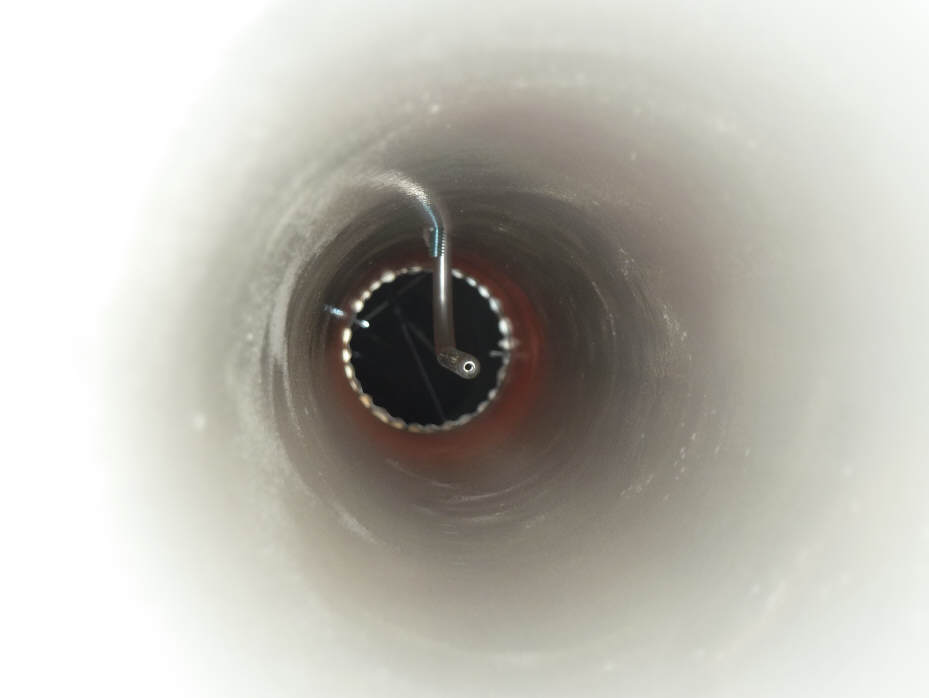
This is the view the airflow gets of
the pitot tube on its perilous journey into the heart of the collector.
Its positioned in the center of the 4 inch PVC duct that I added to the end of
the 6 inch inlet duct for the collector.
Using the smaller 4 inch dia duct
results in a larger air velocity so that the pressure generated by the pitot
tube is large enough to measure with my manometer-- its still only about 0.05
inches of water with about 75 cfm going through the collector. This is
into the useable range of my manometer, but not by a lot. When you
step the flow up to about 100 cfm, the pitot pressure goes up to about 0.10 inch
of water, which is better.
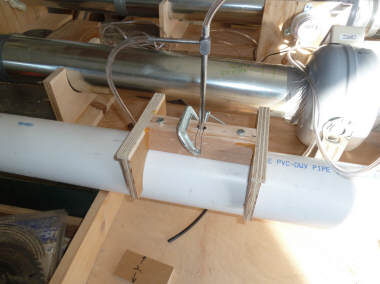
The wood jig that holds the pitot precisely in place in
the center of the duct. |
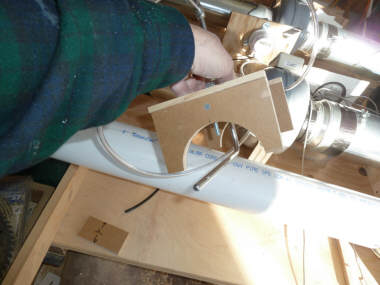
Showing the pitot tube in the jig. |
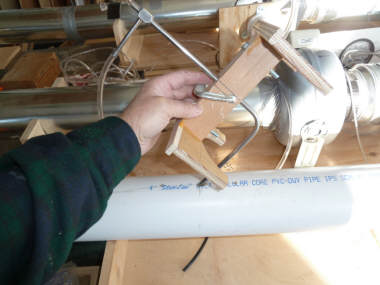
Inserting the pitot tube into the hole in the
4 inch duct wall to take a measurement. |
In the picture above, the white 4
inch PVC duct in the foreground is what I added onto the regular 6 inch inlet
duct in order to be able to put the pitot in a higher velocity flow. This
new 4 inch duct is 60 inches long, which allows for the 8 diameters of of
clear/straight duct they want before the pitot and the 2 diameters after the
pitot -- this is to try to get clean air at the pitot entrance.
Metal duct behind the white PVC is
the outlet duct for the collector with the blower installed in it.
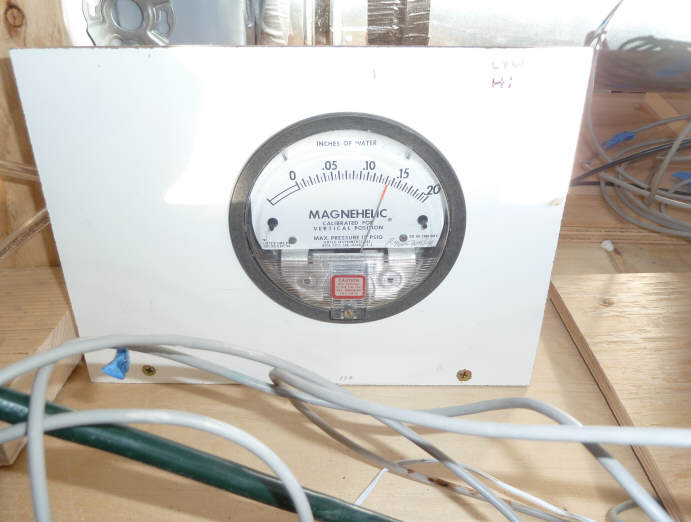
I used this pressure meter and the
new digital one I have from the same company to measure the pitot tube pressure
difference.
Both meters worked OK and agreed
well, but its a little easier to see the time variations on this analog one.
As an example, when the average
reading on this one is about 0.045 inches of water, it will vary over a range
from about 0.04 to 0.048.
The digital meter does about the
same. For the analog meter, I eyeball the average, for the
digital meter, write down 10 readings at the update rate (about 1 per second),
and average them.
I would want to say that the reading
I get is within about +- 0.01 of the actual average meter reading.
I did all the measurements with the
tube centered in the duct, which should get the peak duct velocity.
I think this is OK for our comparative testing, but for real flow rates, a
velocity survey across the duct with the pitot tube measuring flow at several
carefully chosen places in needed -- maybe later :)
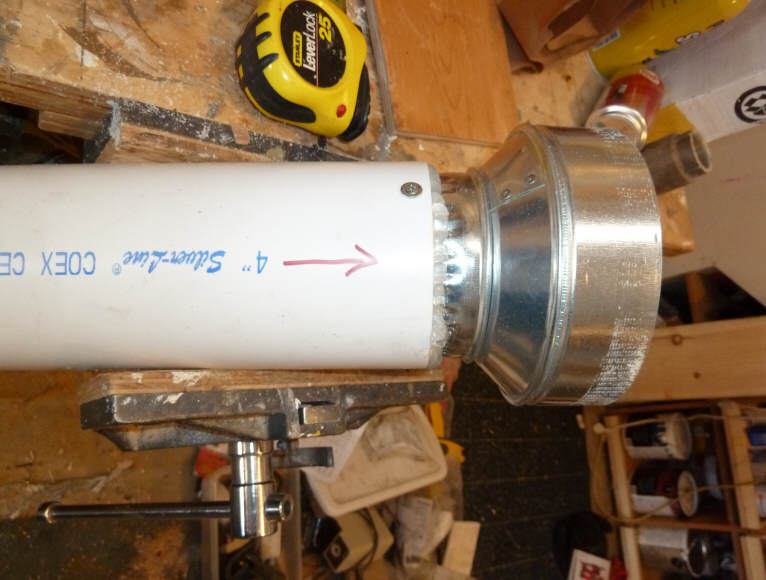
Transition from 4 inch PVC to the 6
inch metal collector inlet duct.
The joint is sealed with silicone,
and in general I tried to take great panes to seal or tape every joint.
Also did a more through smoke test
for leaks on both of the two screen collectors, and found and plugged some small
leaks.
Gary Feb 5, 2011
